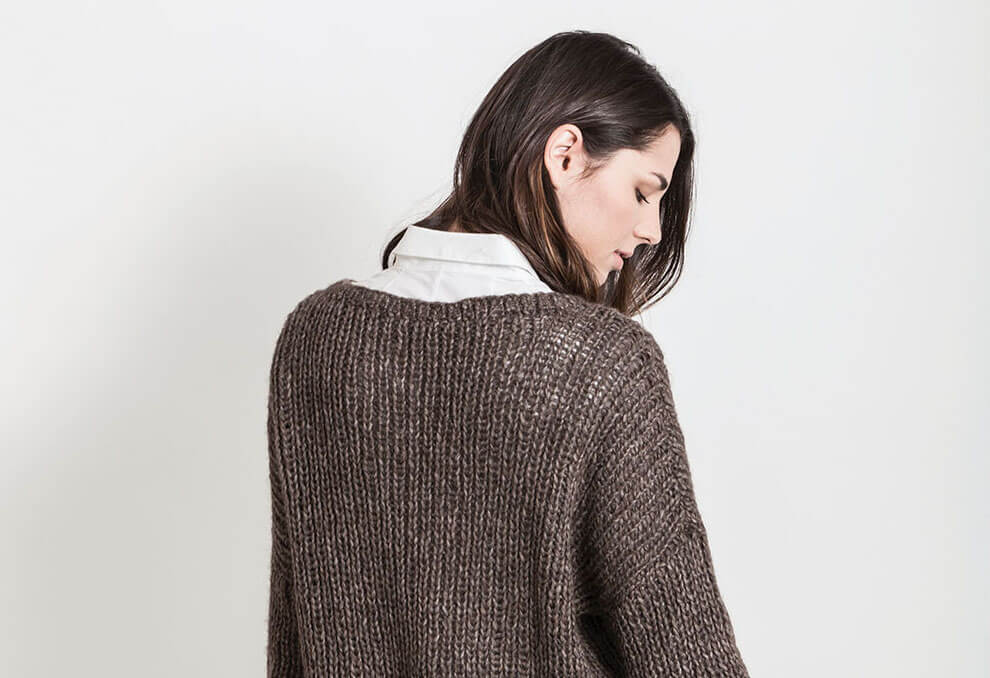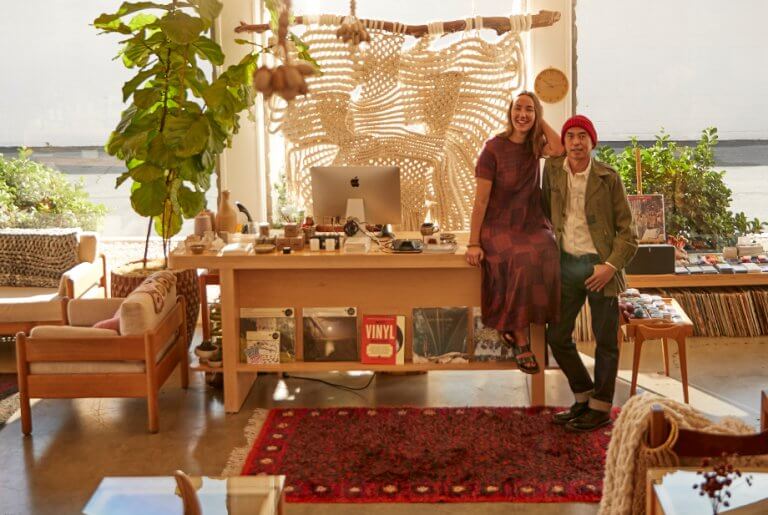Please log in to view store materials.

Knitting your first sweater can seem like an intimidating project to take on, but, if you're reading this, you probably are more than ready to start. In this blog, learn everything you need to know to make that first big jump to knitting a sweater, including tips and recommended knitting patterns. Get ready to explore the world of sweater knitting with natural fibers. Now let's get started!
Here's how to start knitting your first sweater:
There are many ways to knit a sweater: seam-to-seam, top-down yoke, flat, raglan, etc. Don't worry about all of the different variations right now. Rather ask yourself how comfortable you are with seaming. Most sweaters knit from the top-down are seamless, which is an appealing option to those of us still refining our finishing skills. Other sweaters are knit entirely flat or have set-in sleeves, meaning the front and back are knit flat and the sleeves are seamed in. This is preferable for those who like to have less stitches on their needles and prefer flat knitting. It can also be easier to go back and fix mistakes since you'll have four separate pieces of fabric rather than one. Which one is easier is entirely based on your skills and preferences. If one way doesn't work well for you, there are other ways to knit a sweater.
See below to compare a sweater knit entirely flat and then seamed to a seamless sweater knit entirely in the round:
(Both project are great for a beginner sweater-knitter!)
We know making a swatch can seem like an unnecessary step when you're ready to start a new project, but with sweaters it is extremely important! Being a half-stitch off could ruin the fit and is much less forgiving than being off-gauge for an accessory piece. In addition, always wet block your swatches for gauge. Due to the weight of larger pieces and the ability for natural fibers to grow, we suggest wet blocking so you have no unexpected size changes after a few wears! While that disclaimer may have sounded scary, it really isn't. Simply breathe, take your time, and measure your gauge multiple times to ensure it's right before you start.
Some natural fibers grow more than others. This is particularly true of any yarn with alpaca fiber in it. As long as you measure your wet-blocked gauge this shouldn't make a difference in difficulty. The only thing to consider while you're knitting is that the piece will look larger once it's finished.
Each pattern published has finished measurements but that doesn't mean you should match up your exact chest measurements to finished measurements. Each sweater has something called ease: it can have a negative ease, a zero ease, or a positive ease. Ease is the extra fabric (or lack there of) around each measurement area. If you're a size 40" bust, a negative ease would have a finished measurement less than 40", a zero ease would be exactly 40", and a positive ease would be more than 40" The difference between your measurements and the finished measurements is what is defined as "ease."
First write down your body's measurements, then compare it to the finished measurements of the pattern and decide how much ease you want in each area. If you have a larger bust, you may choose to go up a size, or you may need to shorten sleeves, etc. Getting comfortable and understanding what works best for you is something that you'll learn over time. When you're new, we suggest trying a pattern with positive ease as it can be much more forgiving.
The Preston Pullover (pictured below) has a positive ease and boxy shape, making it a great first sweater to knit.
Like anything in life, take it step by step until you've reached your goal. If this all seems overwhelming, try starting small...and we mean that literally. Our toddler and baby patterns are extremely sweet and your unique result could become a family heirloom. Once you finish a few of these smaller ones, you'll be set to make a perfect sweater in an adult size.
Knitters really enjoy helping other knitters. The best advice to improve your knitting skills: become friends with your local yarn store! Blue Sky Fibers has an incredible group of yarn stores who carry our yarn, host classes, and are more than happy to help you on your knitting journey. Visit our stockist page to find the store nearest you. Let them know what you're going to make with your yarn, get to know the employees who will support you along the way.
Social media is another wonderful way to connect to the knitting community. Join the #myfirstsweater hashtag to share your progress, post in Ravelry, and always share your final project with us!
